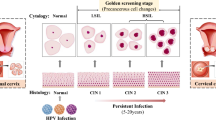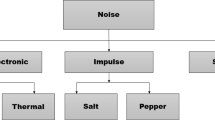Abstract
Autofocus methods play crucial roles in optical systems, which closely relate to the collected image quality. Due to the different focal lengths of cervical areas in smears, existing focusing approaches often result in blurry images of lymphocytes and epithelial cells, which are the keys for the cervical cancer detection. Aiming at this problem, a novel focus method based on multi regions of interest window is presented. The proposed approach applies multiple-median filter and histogram equalization for the image denoising. Multi-ROI (Region of interest) focus window consisting of image processing, selective search and BP (Back Propagation) neural network is used for the autofocus. Comprehensive analysis denotes that the proposed autofocus algorithm achieves the accuracy of 93.7% and an average focusing time (sec/mm2) of 11.89. Validation on another dataset CC proves its robustness, comparison with the recent studies shows its practical performance. The results which we obtained suggest that the proposed autofocus model based on multi-ROI window can be used effectively in scanning of cervical cell images.
















Similar content being viewed by others
References
Anwar S, Barnes N (2019) Real image denoising with feature attention. In: Proceedings of the IEEE/CVF International Conference on Computer Vision, pp 3155–3164
Aravind Kumar M, Manjunatha Chari K (2017) An efficient pipelined architecture for real-valued fast Fourier transform. Int J Electron 104:692–708
Chang Y, Jung C, Ke P, Song H, Hwang J (2018) Automatic contrast-limited adaptive histogram equalization with dual gamma correction. IEEE Access 6:11782–11792
Chen G, Fan X (2018) Autofocus window selection algorithm based on saliency detection. In: Sixth International Conference on Optical and Photonic Engineering (icOPEN 2018). International Society for Optics and Photonics, p 108271J
Cruza JF, Camacho J, Mateos R, Fritsch C (2019) A new beamforming method and hardware architecture for real time two way dynamic depth focusing. Ultrasonics 99:105965
Cui J, Gong K, Guo N, Wu C, Meng X, Kim K, Zheng K, Wu Z, Fu L, Xu B (2019) PET image denoising using unsupervised deep learning. Eur J Nucl Med Mol Imaging 46:2780–2789
Dalal N, Triggs B (2005) Histograms of oriented gradients for human detection. In: 2005 IEEE computer society conference on computer vision and pattern recognition (CVPR'05). Ieee, pp 886–93
Dastidar TR Automated focus distance estimation for digital microscopy using deep convolutional neural networks. In: 2019 IEEE/CVF conference on computer vision and pattern recognition workshops (CVPRW), 2019. IEEE, pp 1049–1056
Deivalakshmi S, Palanisamy P (2016) Removal of high density salt and pepper noise through improved tolerance based selective arithmetic mean filtering with wavelet thresholding. AEU-Int J Electron Commun 70:757–776
El Helou M, Süsstrunk S (2020) Blind universal Bayesian image denoising with Gaussian noise level learning. IEEE Trans Image Process 29:4885–4897
Felzenszwalb PF, Huttenlocher DP (2004) Efficient graph-based image segmentation. Int J Comput Vis 59:167–181
Gai S, Bao Z (2019) New image denoising algorithm via improved deep convolutional neural network with perceptive loss. Expert Syst Appl 138:112815
Ge Y, Li B, Zhao Y, Yan W (2019) Hh-net: Image driven microscope fast auto-focus with deep neural network. In: Proceedings of the 2019 9th International Conference on Biomedical Engineering and Technology, pp 180–85
Gu CC, Wu KJ, Hu J, Hao C, Guan XP (2015) Region sampling for robust and rapid autofocus in microscope. Microsc Res Tech 78:382–390
Hao Q, Xiao Y, Cao J, Cheng Y, Sun C (2018) Improving the performances of autofocus based on adaptive retina-like sampling model. Opt Commun 410:269–276
Hecht-Nielsen R (1992) Theory of the backpropagation neural network. Neural networks for perception. Elsevier, pp 65–93
Ingram M, Gachagan A, Nordon A, Mulholland A, Hegarty M (2020) Calibration of ultrasonic hardware for enhanced total focusing method imaging. Insight: Non-Destr Test Cond Monit 62:408–415
Ivanov T, Kumar A, Sharoukhov D, Ortega F, Putman M (2020) DeepFocus: a deep learning model for focusing microscope systems. In: Applications of Machine Learning 2020. International Society for Optics and Photonics, p 1151103
Jiang S, Liao J, Bian Z, Guo K, Zhang Y, Zheng G (2018)Transform-and multi-domain deep learning for single-frame rapid autofocusing in whole slide imaging. Biomed Opt Express 9:1601–1612
Juočas L, Raudonis V, Maskeliūnas R, Damaševičius R, Woźniak M (2019)Multi-focusing algorithm for microscopy imagery in assembly line using low-cost camera. Int J Adv Manuf Technol 102:3217–3227
Kim H, Oh M, Lee H, Jang J, Kim MU, Yang HJ, Ryoo M, Lee J (2019)Deep-learning based autofocus score prediction of scanning electron microscope. Microsc Microanal 25:182–183
Kudryavtsev AV, Dembélé S, Piat N (2017) Autofocus on moving object in scanning electron microscope. Ultramicroscopy 182:216–225
Li X (2016) Increasing lithographic depth of focus window using wafer topography. Google Patents
Li Y, Chen N, Zhang J (2010) Fast and high sensitivity focusing evaluation function. Appl Res Comput 27:1534–1536
Li L, Xia W, Lin W, Fang Y, Wang S (2016)No-reference and robust image sharpness evaluation based on multiscale spatial and spectral features. IEEE Trans Multimed 19:1030–1040
Li Q, Li L, Lu Z, Zhou Y, Zhu H (2019)No-reference Sharpness Index for Scanning Electron Microscopy Images Based on Dark Channel Prior. KSII Trans Internet Inf Syst 13
Li L, Pan Z, Cui H, Liu J, Yang S, Liu L, Tian Y, Wang W (2019) Adaptive window iteration algorithm for enhancing 3D shape recovery from image focus. Chin Opt Lett 17:061001
Liang Y, Yan M, Tang Z, He Z, Liu J (2019) Learning to autofocus based on gradient boosting machine for optical microscopy. Optik 198:163002
Liu D, Wen B, Liu X, Wang Z, Huang TS (2017) When image denoising meets high-level vision tasks: a deep learning approach. arXiv preprint arXiv:170604284
Luo Y, Huang L, Rivenson Y, Ozcan A (2021)Single-shot autofocusing of microscopy images using deep learning. ACS Photonics 8:625–638
Otsu N (1979) A threshold selection method from gray-level histograms. IEEE Trans Syst Man Cybern 9:62–66
Pirsiavash H, Ramanan D, Fowlkes CC (2011)Globally-optimal greedy algorithms for tracking a variable number of objects. In: CVPR 2011. IEEE, pp 1201–08
Rai Dastidar T, Ethirajan R (2020) Whole slide imaging system using deep learning-based automated focusing. Biomed Opt Express 11:480–491. https://doi.org/10.1364/BOE.379780
Saito H, Saito K (2019) Image focusing analysis using coded aperture made of a printed mask. Jpn J Appl Phys 58:SKKA01
Santos A, Ortiz de Solórzano C, Vaquero JJ, Pena JM, Malpica N, del Pozo F (1997) Evaluation of autofocus functions in molecular cytogenetic analysis. J Microsc 188:264–272
Sara U, Akter M, Uddin MS (2019) Image quality assessment through FSIM, SSIM, MSE and PSNR—a comparative study. J Comput Commun 7:8–18
Shah M, Mishra S, Sarkar M, Rout C (2017) Identification of robust focus measure functions for the automated capturing of focused images from Ziehl–Neelsen stained sputum smear microscopy slide. Cytometry Part A 91:800–809
Shilston RT (2012) Blur perception: an evaluation of focus measures. UCL (University College London)
Tang JR, Isa NAM (2017)Bi-histogram equalization using modified histogram bins. Appl Soft Comput 55:31–43
Torre LA, Bray F, Siegel RL, Ferlay J, Lortet-Tieulent J, Jemal A (2015) Global cancer statistics, 2012. CA Cancer J Clin 65:87–108
Uijlings JR, Van De Sande KE, Gevers T, Smeulders AW (2013) Selective search for object recognition. Int J Comput Vis 104:154–171
Wang Z, Lei M, Yao B, Cai Y, Liang Y, Yang Y, Yang X, Li H, Xiong D (2015) Compact multi-band fluorescent microscope with an electrically tunable lens for autofocusing. Biomed Opt Express 6:4353–4364
Weng J-F, Lu G-H, Weng C-J, Lin Y-H, Liu C-F, Vincke R, Ting H-C, Chang T-T(2021) Microscope autofocus algorithm based on number of image slope variations. Opt Express 29:10285–10306
Wu H, Mao Y, Xue C, Wei Q, Wu W (2019) A Method for Selecting Auto-focusing Window of Photoelectric Theodolite. In: 2019 International Conference on Big Data, Electronics and Communication Engineering (BDECE 2019). Atlantis Press, pp 88–92
Yan Z, Chen G, Xu W, Yang C, Lu Y (2018) Study of an image autofocus method based on power threshold function wavelet reconstruction and a quality evaluation algorithm. Appl Opt 57:9714–9721
Yeo T, Ong S, Sinniah R (1993) Autofocusing for tissue microscopy. Image Vis Comput 11:629–639
Yu J, Tan L, Zhou S, Wang L, Siddique MA (2017) Image denoising algorithm based on entropy and adaptive fractional order calculus operator. IEEE Access 5:12275–12285
Zhai Y, Zhou D, Liu Y, Liu S, Peng K (2011) Design of evaluation index for auto-focusing function and optimal function selection. Acta Opt Sin 31:0418002
Zhang H, Zhu Q, Fan C, Deng D (2013) Image quality assessment based on Prewitt magnitude. AEU-Int J Electron Commun 67:799–803
Zhang F-S, Li S-W, Hu Z-G, Du Z (2017) Fish swarm window selection algorithm based on cell microscopic automatic focus. Clust Comput 20:485–495
Zhang K, Zuo W, Chen Y, Meng D, Zhang L (2017) Beyond a gaussian denoiser: residual learning of deep cnn for image denoising. IEEE Trans Image Process 26:3142–3155
Zhang Y, Liu L, Gong W, Yu H, Wang W, Zhao C, Wang P, Ueda T (2018) Autofocus system and evaluation methodologies: a literature review. Sens Mater 30:1165–1174
Zhang X, Fan F, Gheisari M, Srivastava G (2019) A novel auto-focus method for image processing using laser triangulation. IEEE Access 7:64837–64843
Zhao Q, Liu B, Xu Z (2013) Research and realization of an anti-noise auto-focusing algorithm. In: 2013 5th International Conference on Intelligent Human-Machine Systems and Cybernetics. IEEE, pp 255–58
Zhou R, Ding H, Yu F (2018) A real-time continuous auto-focus algorithm for stereo microscope cameras. In: Real-time Photonic Measurements, Data Management, and Processing III. International Society for Optics and Photonics, p 108220L
Acknowledgments
Dongyao Jia thanks the Beijing Jiaotong University for supporting this cooperative project.
Funding
Beijing Jiaotong University Technology development project(W19L00130).
Author information
Authors and Affiliations
Corresponding author
Ethics declarations
Conflict of interest
The authors declare no conflicts of interest.
Additional information
Publisher’s note
Springer Nature remains neutral with regard to jurisdictional claims in published maps and institutional affiliations.
Rights and permissions
About this article
Cite this article
Zhang, C., Jia, D., Wu, N. et al. Autofocus method based on multi regions of interest window for cervical smear images. Multimed Tools Appl 81, 18783–18805 (2022). https://doi.org/10.1007/s11042-022-12247-x
Received:
Revised:
Accepted:
Published:
Issue Date:
DOI: https://doi.org/10.1007/s11042-022-12247-x




